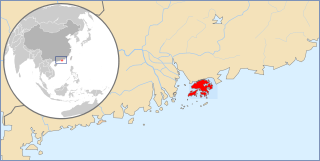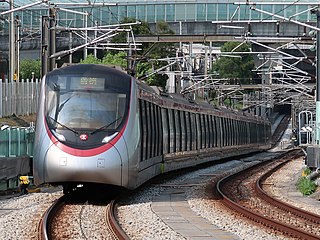
Hong Kong has a highly developed transport network, encompassing both public and private transport. Based on Hong Kong Government's Travel Characteristics Survey, over 90% of daily journeys are on public transport, the highest rate in the world. However, in 2014 the Transport Advisory Committee, which advises the Government on transportation issues, issued a report on the much-worsened congestion problem in Hong Kong and pointed at the excessive growth of private cars during the past 10–15 years.

Yau Tsim Mong District is one of 18 districts of Hong Kong, located on the western part of Kowloon Peninsula. It is the core urban area of Kowloon. The district has the second highest population density of all districts, at 49,115 km2 (18,963 sq mi). The 2016 By-Census recorded the total population of Yau Tsim Mong District at 342,970.
Hong Kong counts approximately 600 temples, shrines and monasteries. While Buddhism and Christianity are the most widely practiced religions, most religions are represented in the Special Administrative Region.

Mei Foo is a Hong Kong MTR station located in Mei Foo Sun Chuen, Lai Chi Kok, New Kowloon. It is the only interchange station between the Tsuen Wan line and the Tuen Ma line, situated between Lai Chi Kok and Lai King stations on the Tsuen Wan line and Nam Cheong and Tsuen Wan West stations on the Tuen Ma line. Mei Foo station's colour is blue.
ParknShop is one of the two largest supermarket chains in Hong Kong, the other being Wellcome. ParknShop operates more than 200 outlets in Hong Kong, Macau and mainland China.

Telephone numbers in Hong Kong are mostly eight-digit. Fixed land line numbers start with 2 or 3, mobile (cellular) phone numbers with 4, 5, 6, 7, 8, or 9, pager numbers with 7 and forwarding service with 8. Since the end of 1989, there have been no area codes within Hong Kong.
Castle Peak Road is the longest road in Hong Kong. Completed in 1920, it runs in the approximate shape of an arc of a semi-circle. It runs West from Tai Po Road in Sham Shui Po, New Kowloon, to Tuen Mun, then north to Yuen Long then east to Sheung Shui, in the very north of the New Territories. It is divided into 22 sections. It serves south, west and north New Territories, being one of the most distant roads in early Hong Kong.
Articles related to Hong Kong include:

The Tuen Ma line is a rapid transit line that forms part of the Mass Transit Railway (MTR) system in Hong Kong. Coloured brown on the map, the Tuen Ma line is 56.2 kilometres (34.9 mi) in length, making it the longest line of the MTR network. It has a total of 27 stations, more than any other in the MTR system.

Hong Kong's rail network mainly comprises public transport trains operated by the MTR Corporation Limited (MTRC). The MTRC operates the metro network of the territory, the commuter rail network connecting the northeastern, northwestern and southwestern New Territories to the urban areas, and a light rail network in northwestern New Territories. The operations of the territory's two leading railway companies, MTRC and the Kowloon-Canton Railway Corporation (KCRC), were merged in 2007 on grounds of economies of scale and cost effectiveness. The Hong Kong Government has an explicit stated transport policy of using railways as its transport backbone.

The Hong Kong government started developing new towns in the 1950s to accommodate Hong Kong's booming population. During the first phase of development, the newly developed towns were called "satellite towns", a concept borrowed from the United Kingdom, of which Hong Kong was a colony. Kwun Tong, located in eastern Kowloon, and Tsuen Wan, located in the south-west of the New Territories, were designated as the first satellite towns, when the urban area in Hong Kong was still relatively small, restricted to the central and western parts of Kowloon Peninsula and the northern side of Hong Kong Island. Wah Fu Estate was also built in a remote corner on the southern side of Hong Kong Island, with similar concepts but at a smaller scale.










